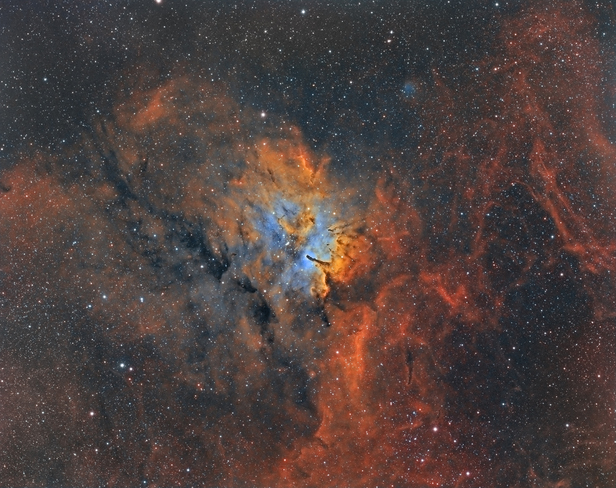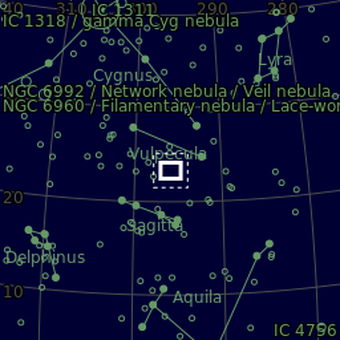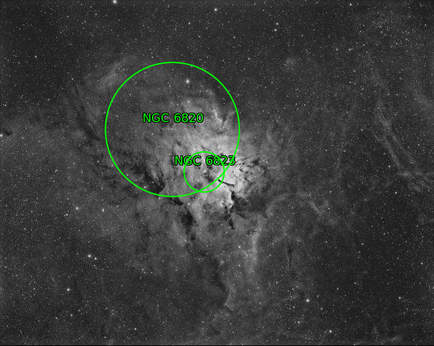NGC6820
|
Details
M: EQ8 T: Takahashi FSQ85 0.73x C: QSI683 and Moravian G2-8300 with Astrodon 3nm Ha, OIII and SII filters 46x1800s Ha 36x1800s OIII 31x1800s SII Total exposure time 56 hours 30 mins Details
M: Avalon Linear fast reverse T: Takahashi FSQ85 0.73x C: QSI690-wsg with 3nm Ha and OIII filters 14x1800s Ha 11x1800s OIII 6x1800s SII 15 hours and 30 minutes total exposure time. |
NGC 6820 is an emission nebula that surrounds open cluster NGC 6823 in Vulpecula. The nebula NGC 6820 is also called Sh 2-86.The most striking feature is the trunk-like pillar of dust and gas protruding from the east side of the nebula. The huge pillars of gas and dust are probably formed when surrounding gas and dust is pushed and eroded away by radiation from nearby stars. NGC6820 lies about 6000 light years away.
|




